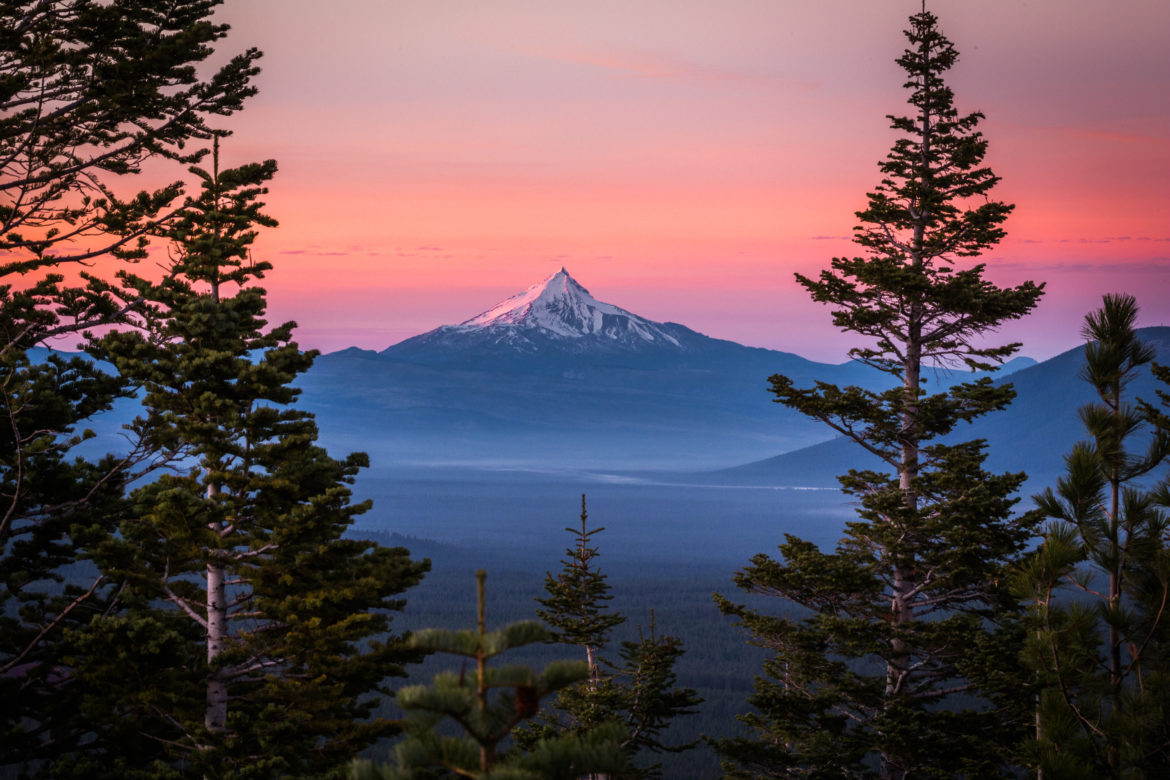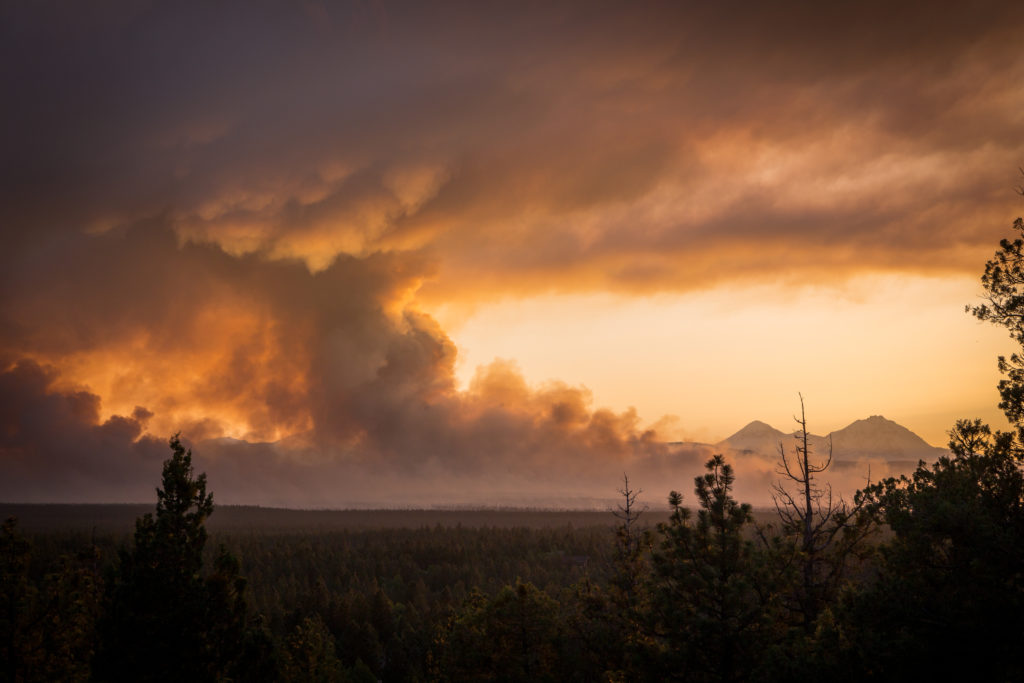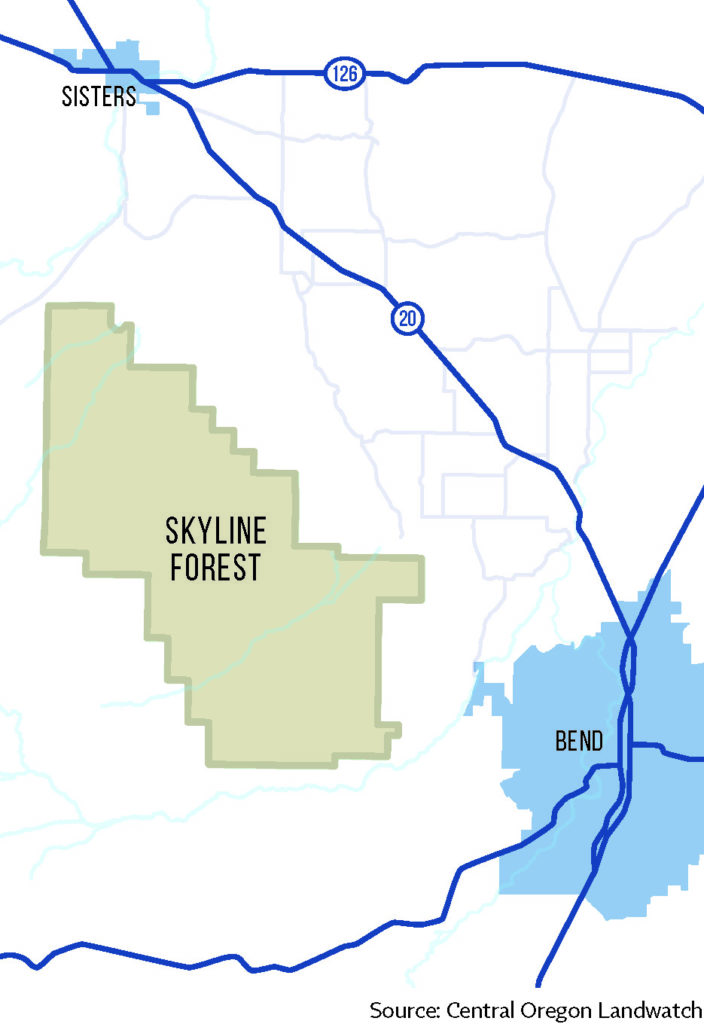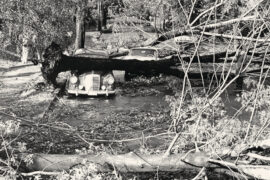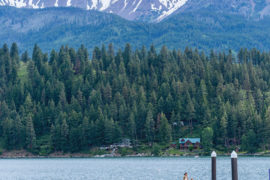The $127 million question—could this finally be the moment Skyline Forest becomes a Central Oregon Community Forest?
written by Kevin Max
From nearly any high point in Bend, you can see the vast stand of pines that creates a deep green vista to the northwest, all the way to Sisters. Mountain bikers, gravel riders, hikers, snowshoers, hunters and fly-fishers find solitude here among the mule deer and elk habitat. Ponderosa pines tower over its creeks and springs weaving through the forest’s floor. In its entirety, Skyline Forest is nearly 33,000 acres, or the equivalent of 50.5 square miles. For perspective, Bend, itself, is only 33 square miles.
What may come as a surprise to many of Skyline Forest’s users, this vast forest on Bend’s northwest side is not publicly owned. Rather it’s the private property of a Chinese investment firm, Shanda, whose portfolio includes mostly Chinese tech companies.
Here’s where the story gets interesting. The privately owned Skyline Forest is for sale, again.
Listed for $127 million by Polvi Real Estate, Skyline Forest is an expensively priced piece of land that local nonprofits, municipalities and state agencies have been actively working to acquire over the past two decades and multiple owners.
“The ideal buyer for the property,” said Jake Polvi, real estate agent for the seller, “is an experienced steward of the land. The local conservation entities have great visions, but they lack the ability to implement. The owner’s goal is to sell the property in 2022, he added, and that the owner has a history of working with public entities and local stakeholders in Central Oregon.
While the ideal buyer may be an entity with experience in stewardship of land, the actual buyer could come from a less-than-ideal background such as another investment bank, a private buyer, timber companies, even destination resort developers if the land use zoning were to be changed.
Indeed Polvi’s website seems to target a different profile of buyer altogether than one centered on stewardship. “Unquestionably one of the most beautiful blocks of timberland, not only in Oregon, but in the entire West. This prime investment presents an excellent opportunity for recreational enthusiasts who seek a private retreat with stunning views and abundant wildlife.”
Now, as Bend’s population soars, as natural habitat is increasingly developed and in an emerging era when climate change is driving warmer global temperatures and increasing levels of wildfires in Oregon, the stakes for these 33,000 forested acres adjacent to Bend and Sisters are high.
“In the face of mounting pressures from regional growth, a changing climate, and the increasing risk wildfire poses to Oregon communities, we need to act with urgency to conserve this place,” said Ben Gordon, Central Oregon LandWatch executive director. “We can’t just keep crossing our fingers as the land is purchased and sold again, and hope a new buyer continues to protect the landscape. It’s time to find a way to permanently conserve Skyline Forest and avoid the whims of speculative developers looking to build more luxury housing.”
Central Oregon would greatly increase its recreation profile, mitigate its fire risk through healthy active forest management and preserve critical habitat for wildlife, which is steadily being chipped away at for housing.
“Something that makes living in Central Oregon incredible is the compact footprint of our cities and towns that keep nature and access to open, undeveloped places nearby,” said Gordon. “Skyline Forest is perhaps the largest privately held piece of the forest between the Cascade Mountains and the towns of Bend and Sisters. Seeing it become housing would be a terrible loss, while enhancing the community values of recreation, wildlife habitat and wildfire safety would be a terrific gain for our region.”
While many Oregonians may be hearing about Skyline Forest by reading this story, it has quietly helped shape state land-use laws and been at the forefront of priorities for Deschutes Land Trust for decades. The Land Trust has played a leading role in the Skyline Forest saga over the past twenty years. Now, with Skyline Forest back on the market, the Land Trust is determined to bring more voices—and perhaps a county bind issue—to the table in hopes of raising greater community awareness of the opportunity.
A brief history of Skyline Forest begins in the late ’80s, when publicly traded timber giant Crown Pacific owned it along with hundreds of thousands of acres throughout the West. In June 2003, Crown Pacific filed for bankruptcy. The following year, Deschutes Land Trust began working with former Clinton Administration forestry advisor Tom Tuchmann, who founded US Forest Capital, a firm that invests in working forests.
In 2005, Tuchmann and Deschutes Land Trust testified in favor of the Community Forest Authority Act, an Oregon bill that Governor Kulongoski signed into law that allowed municipalities to issue bonds on behalf of nonprofits to acquire large-scale working forests. The Land Trust went right to work, renaming this property Skyline Forest and stating its intentions of buying that land for sustainable timber harvest, wildlife habitat, education and recreation.
In 2006, Fidelity National Financial Venture took ownership of the property from bankruptcy proceedings, though the Land Trust kept working with Fidelity, hoping to make an eventual conservation acquisition. Nearly a decade later, Fidelity turned its back on its local relations and sold the property along with 60,000 additional acres between Chiloquin and Chemult as a package to Whitefish Cascade Forest Resources (which later became Shanda) for a reported $63 million. Shanda is now asking $127 million for one-third of the acreage it paid less than half for seven years ago.
Notably, in 2010 and 2014, two fires burned a combined 13.000 acres, with more than 10,000 of those in Skyline Forest. Because Skyline is so close to the populations and homes in Bend and Sisters, forest management is paramount and a potential liability for any new owners of the forest.
Nonetheless, the listing price poses new problems for a conservation acquisition that would rely in part on state and federal funding mechanisms. Often this class of funds can only be accessed when a property is not out of line with its appraisal value. Ultimately, with the $127 million price tag now attached to Skyline Forest, it would have to appraise for multiples higher than when it was bundled with 60,000 additional acres. Even if you discount the complete value of the other 60,000 acres, the implicit selling price of Skyline Forest is double that of its purchase price in 2015.
Ultimately, some portion of the funding will have to come from a local bond issue, such as the $195 million new public library bond passed in 2020.
“In conversations we’ve had with folks from the City and from the County, it does seem there may be an interest there,” said Deschutes Land Trust executive director, Rika Ayotte. “It’s certainly a path that other land trusts have pursued for land acquisitions elsewhere and a path we might consider for sure. The best thing we can do right now is just to be prepared on the back end and to keep talking about this with the community, to keep talking about this with funders, so that we’re ready for an opportunity.”
According to Gordon, price is the biggest obstacle right now. The current price is aimed at the luxury market buyers, not a conservation coalition. The property owner’s decision of who to sell the property to will be a defining moment for Central Oregon’s future, Gordon noted.
While a consortium of local organizations pursuing a Skyline purchase currently lacks the funds to acquire Skyline Forest, the group may have other key attributes that separate them from other potential private buyers—large-scale recreation and forest management. One of the interested stakeholders is Bend Park and Recreation District, which manages more than 3,000 developed and undeveloped acres and 75 miles of trail.

“[Skyline Forest] provided a network of trails that the community has used for years, but lacks management of this recreation resource,” noted Don Horton, executive director of Bend Park and Recreation District. “Given that the property is on the boundary between forest and urban development, forest management to reduce the likelihood of a catastrophic wildfire is critical to the future of our community. … Likely the best management strategy will be a consortium of agencies doing what they do best. Bend Park and Recreation District could certainly manage the recreation resource with other agencies managing the forest and conservation resources.”
Between 2010 and 2020 Bend’s population grew at the torrential rate of 42%, as one of the fastest growing cities in the United States. With an increased base of people who move to Bend for its outdoor lifestyle lie greater opportunities. “Most newcomers don’t necessarily realize this land is at risk,” said LandWatch’s Gordon. “We need to raise awareness of and appreciation for Skyline Forest so that our community can get even more excited about protecting this special place for current and future generations.”


